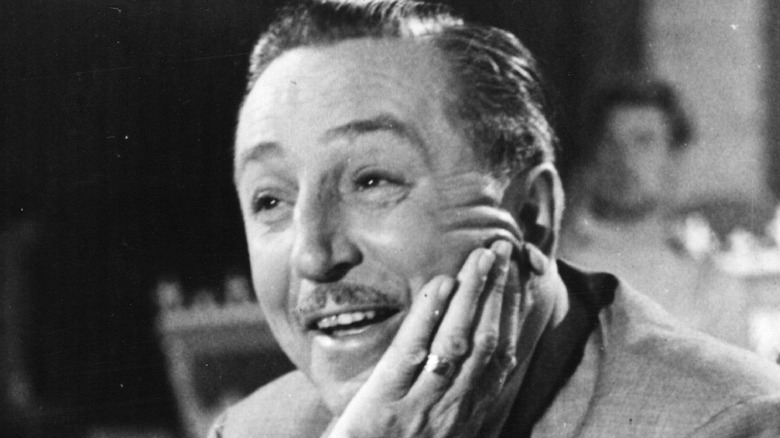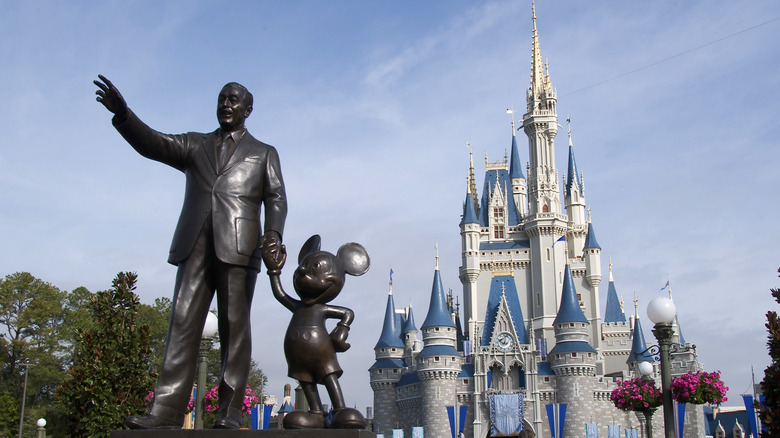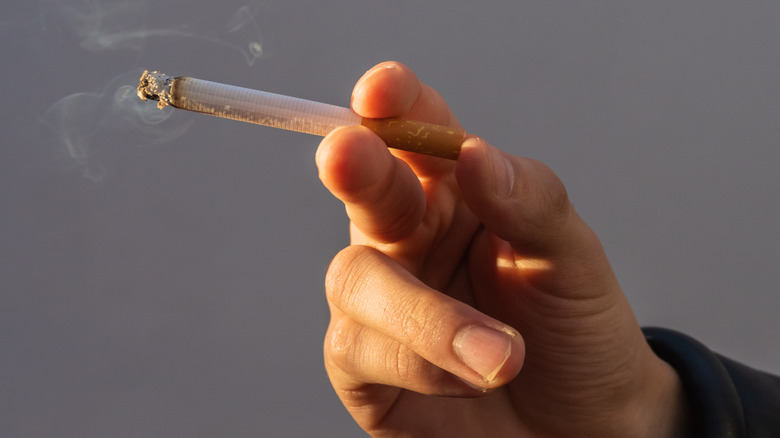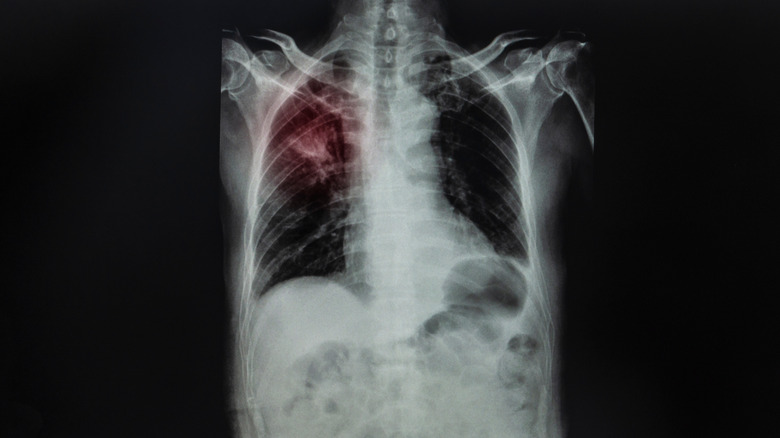The Tragic Death Of Walt Disney Explained
In 1966, an icon of animation, cinema, theme parks, and general pop culture was lost when Walt Disney died at the age of 65. In the early 1900s he did not make much headway, having gone from a red-cross ambulance driver in World War I, according to The Walt Disney Family Museum, to a struggling cartoonist trying to distinguish himself against a sea of competitors. In 1921 he even lost the rights to his first hit character, Oswald the Rabbit, to Universal (via Inverse).
Yet after the releases of "Steamboat Willie" in 1929, where he introduced his flagship character Mickey Mouse, and later Snow White, his first motion picture, in 1937, he saw rapid success. By the 1940s his brand was globally known and captivated millions with not only its animated shorts and films but soon its massive theme parks as well. At the time of his death, Disney's net worth, adjusted for inflation, was estimated to have been around $1 billion (according to Celebrity Net Worth).
Disney was an embodiment of success, but not personal health
Disney himself lived to see this success and plan many projects, such as Disneyland and Disney World. From 1925 until his death, Disney remained married to his wife, Lillian, with whom he had one daughter, Diane, in 1933. Three years later the couple adopted another daughter, whom they named Sharon (via Considering Adoption). Despite the success Disney seemed to have as a businessman and a father and husband, a number of health problems kept him from being part of more.
During his service in World War I he had begun to smoke, a habit that followed him to extremes for the rest of his life, as he turned to cigarettes and pipes in order to facilitate his heavy nicotine intake (via DIsneyDreamer). It was something that Disney actually tried to hide from the public eye; ultimately, he could not save himself from his own actions as his health deteriorated in later years.
His addiction vastly overpowered any desire to improve himself
Disney's smoking habit reflected a deep internal struggle, as he was aware of how being seen with cigarettes could affect the public's perception of him and his work. This apparently got to the point that, according to sources such as PetaPixel, photos of Disney holding a cigarette had been airbrushed. His smoking habit persisted for decades, and even after smoking cigarettes was officially identified as a source of cancer, Disney could not give them up. (He preferred unfiltered Chesterfields, according to "Walt Disney and Other Characters," by Jack Kinney.)
He did make moderate attempts to find alternatives, such as smoking cigarettes with lower levels of nicotine. Not only did nothing stick, but his efforts to conceal his true nicotine use were far greater. Presentations at the studio on the dangers of smoking never saw the founder himself in attendance, he often hid in remote locations in or near the parks to smoke, and he was even seen breaking off the filters of the filtered cigarettes his daughters had pleaded with him to use (via MousePlanet). The "vice," as Disney called it, left him with, among other things, a terrible cough that had the potential to completely halt meetings.
Disney's final days were spent weak and in intensive care
According to Biography, in 1966 Disney saw a doctor in the hopes of treating a long-standing neck injury from polo, a sport that he was passionate about until the injuries he suffered from it forced him to quit (via Dallas Burston Polo Club). When the x-rays came back they showed that Disney had a far more pressing issue: a tumorous mass on his left lung.
Almost immediately he began to receive extensive care, which consisted of various pharmaceuticals, cobalt treatment, and surgery to remove the lung (via Snopes). While the operation succeeded, the extreme physical stress of the treatment left Disney incredibly weak, plus there was no guarantee that the cancer had not begun to spread elsewhere. In late November he needed to return to the hospital after briefly leaving to meet with relatives, and he remained there for the little time he had left.
Disney's smoking addiction is not something the company likes to discuss
On December 15 Walt Disney died, and while the official cause of death was accurately attributed to circulatory collapse, according to the Los Angeles Times, official press releases from the Disney company tended to overlook what led to it. The company appears to have maintained a sort of unspoken non-acknowledgement policy in the years since. Park employees, for instance, are instructed to point with two fingers, supposedly in part to normalize the two fingers Disney has extended in photos (via Travel + Leisure) in which his cigarette, usually held between two fingers, has been removed through airbrushing.
Additionally, when Tom Hanks (above) portrayed Walt Disney in 2013's "Saving Mr. Banks," he was prepared to accurately depict the entrepreneur and his addiction. Yet Hanks claims that he was prevented from doing so — nominally as the company did not want to promote smoking, though probably to some extent save face. The most that was shown was a brief shot of Hanks as Disney putting out a cigarette (via The Guardian).




